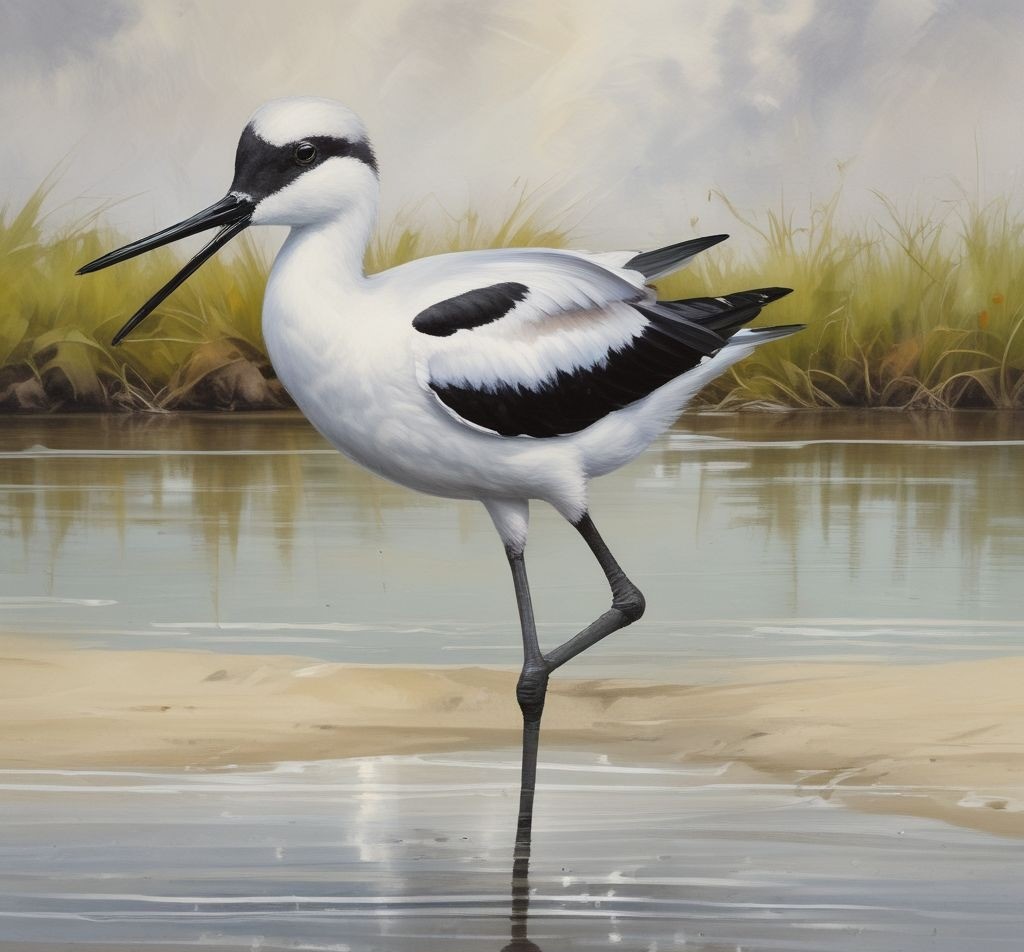Certainly! Here’s 🦩 All About the Avocet in that same clear and fun style:
🦩 All About the Avocet
The elegant wader with a graceful upturned beak! 🌊👣✨
📖 Quick Overview
| Feature | Details |
|---|---|
| Animal Name | Avocet |
| Habitat | Shallow wetlands, mudflats, and salt marshes worldwide |
| Food | Small aquatic insects, crustaceans, and larvae (Carnivore) |
| Group Name | Colony |
| Baby Name | Chick |
| Special Skill | Sweeping its upturned bill side to side to catch food |
| Danger Level | Least Concern 🟢 |

🌟 What Is an Avocet?
The Avocet is a striking bird known for its long, thin legs and upturned bill.
It gracefully walks and sweeps its beak through shallow water to find tasty bugs and tiny creatures.
They have:
- Black and white feathers arranged in bold patterns
- Long, slender blue-gray legs
- A thin, curved beak that sweeps the water
- A sleek body perfect for wading and flying
📍 Where Do Avocets Live?
Avocets live in watery places with shallow water and soft mud.
🗺️ Found In:
- Coastal salt marshes and tidal flats
- Inland wetlands and shallow lakes
- Europe, Australia, Asia, and North America
🌿 Habitat:
- Salt marshes
- Mudflats and shallow lagoons
- Areas rich in small aquatic life
🍽️ What Do Avocets Eat?
Avocets are expert feeders, using their unique bills to find food.
🍴 Favorite foods include:
- Aquatic insects and larvae
- Small crustaceans like shrimp
- Tiny worms and snails
They sweep their bills side to side in water to catch hidden prey.
👨👩👧👦 Family and Groups
Avocets nest in large colonies for safety.
👶 Baby Avocet = Chick
Chicks leave the nest soon after hatching and follow parents to find food.
💪 Avocet Superpowers
- Can run swiftly through shallow water
- Use their upturned bill to sweep and catch food efficiently
- Strong fliers—migrate long distances in some regions
- Nest in groups to protect against predators
💡 Fun Facts About Avocets
- Their sweeping feeding style is unique among birds
- Avocets often stand on one leg to rest and keep warm
- They make soft calls and gentle whistles
- Their striking black-and-white plumage is easy to spot
- Avocets build nests from mud and vegetation close to water
🛑 Are Avocets in Danger?
No, they are currently least concern but face challenges like:
- Wetland habitat loss
- Pollution and human disturbance
- Changes in water levels due to climate or development
💚 How Can We Help Them?
- Protect wetland habitats and restore damaged areas
- Keep waterways clean and free from pollution
- Respect nesting sites by keeping distance
- Support wetland conservation groups
✏️ Activity: Make a Wading Bird Diorama!
🎨 Use paper, sticks, and water colors:
- Create shallow water and mudflats
- Cut out an Avocet with its long legs and curved bill
- Imagine the sounds and movements of birds in the wetland!

✅ Summary
| 🗂️ Category | 🦩 Avocet |
|---|---|
| Type | Bird |
| Diet | Carnivore (insects, crustaceans) |
| Habitat | Shallow wetlands, salt marshes, mudflats |
| Group | Colony |
| Special Skill | Sweeping upturned bill to catch food |
| Danger Level | Least Concern 🟢 |